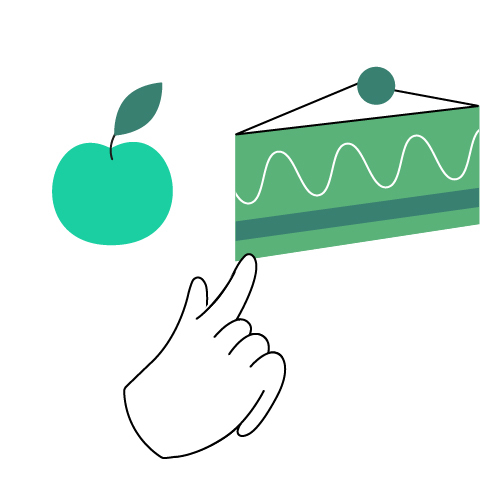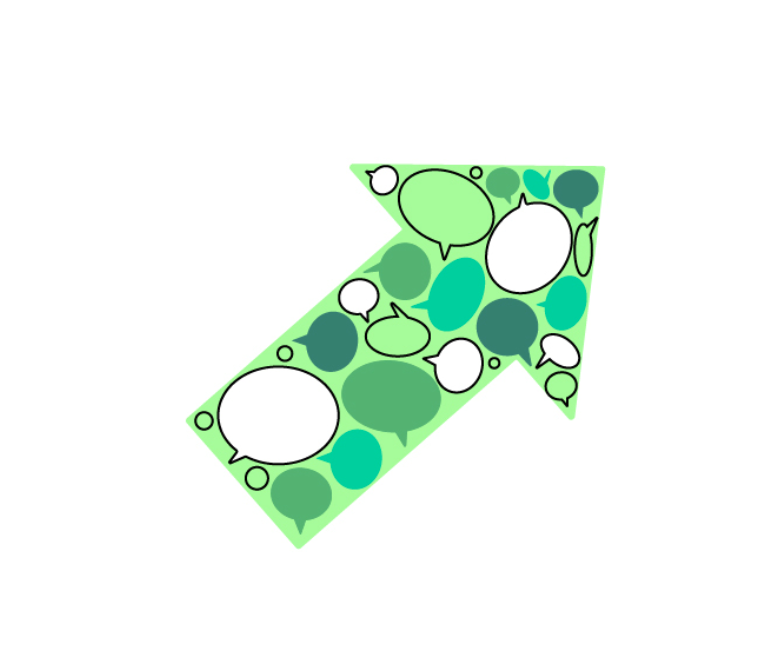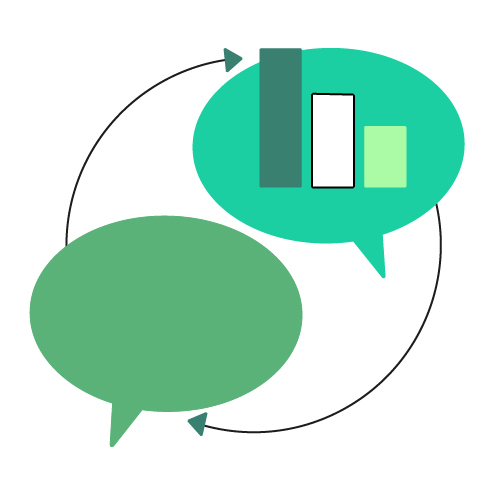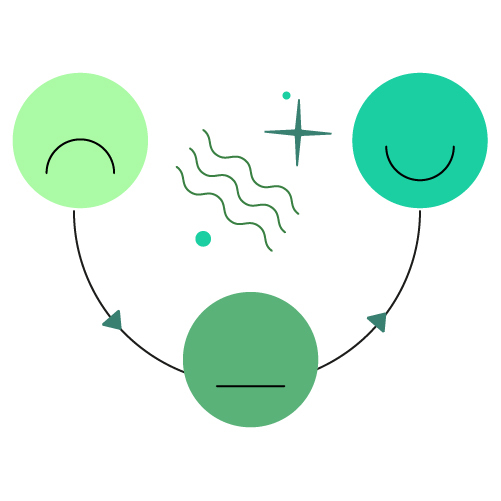
Applied Behavioural Science
Shaping contexts and designing processes and products to enable behaviour change
Introduction
What is Applied Behavioural Science, and why is it important?
We all want to be happy and healthy. We want to see ourselves and our families thrive. Yet we often make decisions that seem to work against these goals. Why is that?
The field of Behavioural Science seeks to understand the mysteries of human behaviour – why we reach for unhealthy snacks when on a diet, forget to make appointments for routine immunizations, put off HIV or STI testing indefinitely, skip doses of hypertension medication, leave the mosquito net folded up in the corner, or fail to save for everyday needs. Behavioural Science leverages insights and evidence from psychology, cognitive science, social science and economics to understand the relationship between our innate human traits and the context we live within, in order to encourage and inhibit behaviour.
Governments, multilateral institutions, and public and private sector organizations use insights from Behavioural Science to uncover how elements of everyday life influence people to behave in ways that do not align with their goals and intentions.
Key principles
- Context matters. People’s decisions and behaviours are shaped by the context in which they operate: the cues they receive, the options that are available and most visible, the actions that seem easiest, the choices they see others making, and the ways people try to influence their choices.
- Changing knowledge and attitudes is often not sufficient to change behaviour. People’s intentions do not always match their behaviours.
- People often fail to predict how they will behave in a given situation. Behavioural Science can help predict how elements of a situation either enable or deter people from making decisions that align with their values. Asking people directly why they do or don’t behave in a certain way will not fully illustrate the range of factors that subconsciously drive decision-making. When self-reporting, people also tend to respond in ways that will be viewed favourably by others (desirability bias).
- Small changes to the context can lead to significant changes in behaviour.
Key terms
- Cognitive biases (mental heuristics) are natural distortions in thinking that affect the decisions and judgements people make. One of the objectives of Behavioural Science is to understand how these innate cognitive biases shape behaviour.
- Intention-action gaps describe the discrepancy between what people say they want to do and what they actually do. Applied Behavioural Science seeks to shape the context to help people follow through on their intentions, eliminating that gap
- Friction is another word for the inconveniences or hassles that can prevent people from following through on their intentions. Applied Behavioural Science seeks to minimize the friction that inhibits healthy or desired behaviours.
- Choice architecture is the design of how (and what) choices are presented to people whose behaviour you want to influence – the number of choices presented, how each is framed, the proximity or ease of one choice over another.
Social and behavioural objectives
Applied Behavioural Science combines thorough qualitative research and evidence from cognitive science and psychology to formulate a deep understanding of a particular context and how features of it may drive or prevent specific behaviours. Using an evidence-based approach can dramatically improve the acceptability, relevance and impact of programmes and policies.
Specifically, Behavioural Science allows programme designers and policymakers to:
- Better understand the drivers of and barriers to uptake of specific behaviours that align with people's goals and intentions
- Design behaviourally-informed communications, interventions, technologies, policies and programmes, including messages and strategies that effectively address specific behavioural drivers in unique contexts.
- Focus on the experiences of the people impacted by policies and programmes, instead of the preferences and perspectives of experts and policymakers
- Address the underlying determinants of behaviours and motivations, beyond knowledge and attitudes, by understanding how behaviours result from the interaction between cognitive, social and environmental influences
- Use an evidence-based approach to develop and test hypotheses around the contextual drivers of specific behaviours followed by an iterative, experimentation-based approach to design solutions.
The limits and opportunities associated with an Applied Behavioural Science approach
Behavioural Science (understanding human behaviours) is a critical part of policy and programme development. But Applied Behavioural Science interventions alone (e.g., choice architecture design, nudges) are unlikely to effectively addresst complex and deeply-rooted challenges like gender-based violence, child labour, and discrimination. These issues require changes to larger structural elements such as social relations, economic opportunities, policies and governance, which may still be informed by behavioural insights. In other words, Applied Behavioural Science is such a powerful approach because not only does it help us understand the structural context driving decision-making, it may even generate structural solutions and renewed policy recommendations.
However, Behavioural Science approaches may not directly address all structural, social and policy barriers to behaviour change. For example, if you are designing a programme to encourage uptake of timely counselling for survivors of domestic violence, you will likely want to address individual barriers (perceived need, mental models of counselling), social barriers (taboos around discussing abuse and and lack of a social norm around counselling) and structural barriers (overworked health workers, limited human resources, lack of clear policies around counselling referrals).
Behavioural Science insights may help you uncover, contextualize and address such structural barriers by, for example, informing the design of easy-to-use referral systems and heuristics that help overworked health workers connect survivors with counselling approach needs to be complemented by structurally oriented solutions, such as providing more convenient or accessible counselling centres in low-income communities and working within civil societies to change negative social influences.
Case studies and examples
The field of Applied Behavioural Science is often associated with the ‘nudge theory’ popularized in Cass Sunstein and Richard Thaler’s book Nudge (2008). The insights that underpin nudge theory are critical features of the field of Behavioural Science.
- People do not make decisions or take actions in a vacuum. Their choices are deeply affected by features of the broader context.
- It is often insufficient to change knowledge and attitudes, as people’s behaviours rarely align with their intentions.
- Simple economic models that weigh cost and benefit often fail to predict human behaviour.
However, while these insights may be used to design small changes in the context, known as “nudges,hese tweaks can also be essential to informing policies and larger-scale changes in systems and protocols. The range of case studies below exemplifies the diversity in scope of behaviourally-informed interventions.
Nudges
- NEPAL A peer comparison intervention in clinics increases Long Acting Reversible Contraceptive (LARC) uptake in post-abortion settings by nearly 7 percentage points
- URUGUAY Sending behaviourally-informed text messages increases preschool attendance
- SIERRA LEONE A cost-effective social signalling intervention increases childhood vaccination rates by 14 percentage points
- UKRAINE The Effect of Behavioural Science Tools on Vaccination Uptake: A Randomised Controlled Trial
- NIGERIA Pairing automated calls with text immunisation reminders significantly improved the proportion of infants who completed all routine immunisations by 12 months of age and the timeliness of vaccines administered late in the immunisation schedule
- MADAGASCAR Adding behavioural enhancements to cash transfers improves early childhood development outcomes including long-term food security and children’s social skills
Systemic approaches
- JORDAN Stabilizing livelihoods of Syrian refugees in host communities and vulnerable Jordanians through skill exchanges and employment opportunities
- MOLDOVA Shifting tuberculosis treatment to an at-home approach increases adherence among TB patients
- SENEGAL Using behavioural insights to design a system for integration of family planning and immunization
- SOUTH AFRICA Coupling behaviourally-informed feedback with infrastructure improvements improves water conservation
- MALAWI Shifting how providers approach family planning counselling and integrating tools for improved referrals expands the family planning choice set and improves client satisfaction
Behaviourally-informed policies
- SOUTH AFRICA Embedding growth mindset tools into education policy improves learner outcomes
- HAITI Strengthening disaster preparedness policies and protocols using behavioural insights
- GLOBAL Creating policies to reduce youth unemployment around the globe
More information
To learn more about how to apply Behavioural Science, check-out this how-to guide.
Moving from theory to application
- The Behavioural Insights Research and Design (BIRD) Laboratory
- The New Science of Designing for Humans
- United Nations Behavioural Science Report 2021
- Applying Behavioural Science to Support the Prevention of Violent Extremism: Experiences and Lessons Learned
- World Development Report 2015: Mind, Society, and Behaviour
Frameworks and Approaches
- Michie et al.’s COM-B: Capability, Opportunity, Motivation
- The Behavioural Insights Team’s MINDSPACE
- The Behavioural Insights Team’s EAST Framework
- UNICEF’s Behavioural Drivers Model
How-to guides
- BEAR’s Practitioner’s Guide to Nudging
- The Little Jab Book for COVID-19 Vaccination
- The OECD’s BASIC Toolkit
- The Surgo Foundation’s CUBES Toolkit
Ethical considerations
- Ethical considerations when applying Behavioural Science in projects focused on children
- FORGOOD Framework for ethical considerations when nudging behaviour
Courses
- Behavioural Science Programmes (ABSA)
- Behavioural Insights for Public Policy (BETA)
- Behavioural Science for Practitioners (ideas42)
- Behavioural Economics in Action (University of Toronto/edx)
- SPANISH: Behavioural Economics for Better Policies (IADB)
- Applied Behavioural Science (Ogilvy x 42Courses)
Other resources

Understand - Applied Behavioural Science
Download this article as a PDF
You can download the entire page as a PDF here





